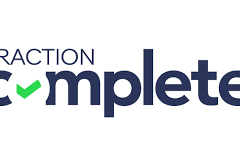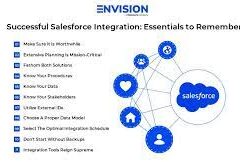If 2020 marked the onset of the pandemic and 2021 was a year of adapting business strategies despite the ongoing challenges, 2022 and the years beyond emerge as the era of digital transformation. If you are currently reading this article, chances are you’ve either initiated, evaluated, or are assessing the value of your digital transformation journey. You need the KPIs of digital transformation to assess your progress.
At Tectonic, we recognize the formidable nature of digital transformation for companies across all scales. Our goal is to assist you in establishing key performance indicators (KPIs) to gauge the success of your Salesforce digital transformation project.
Adapt or Die
Companies must adapt to new technologies as they develop if they want to get ahead of the competition and stay there.
Digital transformation involves creating an omnichannel presence for your customers, allowing them access to your company at their convenience. It also entails implementing tools and systems like Salesforce to enable a scalable omnichannel presence. Often, it involves both.
Customers today engage with companies through various channels beyond just browsing websites. They download apps, interact on social media, read about companies on other platforms, and seek diverse ways to connect. The tools you employ become mission-critical in creating value for your customers. Meeting the growing demand requires a 360-degree view of your customers and the ability to leverage that data to engage with them wherever they seek your content and information.
Over 70 percent of digital initiatives fail; the biggest reasons are unclear goals and inability to track progress.
Because digital transformation is a process, not a destination, KPIs are waypoints, not endpoints.
Digital transformation is the linchpin to achieving this agility and doing so swiftly. Tectonic hopes to be your partner in this transformation, offering the following KPIs to help you measure success along the way.
- Return on Digital Investments:
- Gauge the relationship between the money invested in your digital transformation project and the revenue generated since the transition.
- Employee Productivity:
- Assess how new technology impacts employee productivity, ensuring that the tools put in place enhance efficiency. Customized training is vital for optimal utilization.
- Adoption & Performance Metrics:
- Track daily/monthly active users, adoption rates, average time spent using features, and retention to evaluate how well your team is adapting to new tools or platforms.
- Mean Time to Failure (MTTF): the average time an asset functions before its first failure. This metric shows the system’s reliability with respect to non-repairable system failure,
- Mean Time to Resolve (MTTR): the average time needed to resolve the cause of failure, and
- Mean Time Before Failure (MTBF): the average time between two failures.
- Uptime: the percentage of time that an asset is functional.
- Customer Experience Metrics:
- Measure customer effort, satisfaction, and likelihood to recommend your product or service. Additionally, monitor customer engagement and conversion metrics for a comprehensive view.
- Percentage of AI-Enabled Business:
- Keep track of the portion of your business leveraging artificial intelligence (AI) through tools like Salesforce’s Einstein. Tectonic will assist in integrating AI tools seamlessly.
- Reliability & Availability:
- Ensure a reliable digital presence by monitoring uptime, mean time to failure, mean time to resolve, and mean time before failure.
- Cost-Benefit Analysis:
- Conduct a thorough cost-benefit analysis to prioritize components of your digital transformation, focusing on areas that yield quick returns.
- Return on investment from Digital Technology:
- Evaluate the revenue specifically generated by the introduction of new digital technologies like Salesforce.
- Percentage of Cloud Deployments:
- Measure the success of your cloud deployment strategy in terms of data storage efficiency and accessibility.
- Active Usage Metrics:
- Analyze daily active users, conversion rates, and abandon rates to identify day-to-day issues and ensure your digital transformation is on the right track.
Tectonic, with a proven track record, employs a carefully designed delivery methodology, refined through client feedback and project learnings. Our success is measured by the same criteria we encourage you to use in evaluating your digital transformation KPIs.













